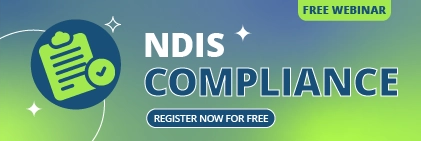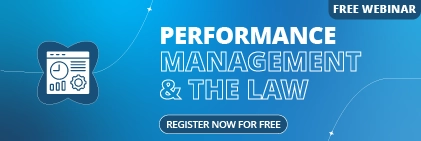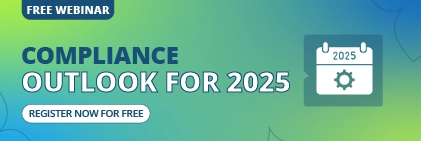Imagine you’re running a business, managing teams across different sites, juggling shift patterns, compliance, skills, leave requests, and performance reviews – all while trying to stay ahead of change.
The tools you had even five years ago now feel clunky. The world is changing fast, and workforce management software (WFM software) is evolving too.
In this blog post, you’ll see how AI, automation, and analytics are not just buzzwords – they are becoming the backbone of tomorrow’s workplace. You’ll understand how they combine to create more innovative, agile, and human-centred workforce systems.
The Evolution of Workforce Management Software
To see where you’re going, you need to look back.
1. The Early Years
In the early days, workforce tools meant spreadsheets, paper rosters, punch cards, and basic attendance systems. HR or operations staff spent hours collating timesheets, adjusting rosters, and following up on approvals.
Everything was manual and reactive. Mistakes were common, flexibility was minimal, and insights were almost non-existent.
2. Cloud-Based Revolution (2010–2020)
Then came the era of cloud and Software as a Service (SaaS) solutions.
Suddenly, you could access HR or workforce tools online, without installing bulky software. Vendors offered modules for time, leave, payroll, and basic rostering.
This shift removed the burden of infrastructure and allowed for incremental feature upgrades. It can be scaled, updated, and accessed from any location.
With cloud, architects began connecting modules – leave linked to pay, schedules to headcount, attendance to cost.
But the intelligence layer was still weak: you saw what happened, but not necessarily why or what to do next.
3. The Modern Era (Post-2020)
This is where we are now—or should aim to be. Workforce systems are becoming intelligent ecosystems.
They can predict, optimise, and surface insights automatically. They use real-time data to respond to disruptions (such as sudden absenteeism or shifts in market demand).
They embed AI, automation, and analytics throughout the work lifecycle. The shift is from reactive tools to proactive systems.
Artificial Intelligence: The Brain of Future Workforce Systems
AI is the “brain” – it perceives patterns, anticipates change, and suggests decisions.
Let’s see how it fits into workforce tools.
1. Predictive Analytics for Workforce Planning
You know your business has seasonal peaks, holiday surges, and fluctuating demand.
AI enables your system to learn from past patterns and forecast future needs. For example, retail may require additional staff during the holiday season; healthcare may experience seasonal increases in patient volume.
AI models utilise your historical data (attendance, production, leave, and turnover) and external factors (weather, events, and economic indicators) to estimate workforce demand.
Then, your system can suggest when to hire, which teams to expand, and where to lean. This provides a proactive blueprint, rather than scrambling at the last minute.
2. AI-Powered Recruitment & Retention
When hiring, AI can intelligently match candidate profiles to roles beyond keywords.
It detects soft skills, experience patterns, and cultural fit. It can also identify internal talent ready for new roles.
On retention, AI models can identify employees who exhibit signs of disengagement or are at risk of attrition. It can monitor patterns, such as decreased productivity, changes in behaviour, or gaps in professional development. You get alerts to act before someone resigns.
A word of caution: you must build fairness and transparency in these models. Biases in historical data can reinforce inequality. Always provide explanations for AI-driven decisions and allow humans to override when necessary.
3. Conversational AI & Virtual HR Assistants
You don’t want your HR team bogged down by repetitive queries — “When’s my next leave due? How do I update my bank details?”
Conversational AI can handle many of these via chatbots or voice assistants. With natural language understanding (NLU), they can answer, escalate, or guide users.
They can also sense employee sentiment by detecting frustration, confusion, or low mood from chat logs, surveys, or interaction patterns, and then alert HR or managers to intervene.
Automation: Redefining Efficiency and Employee Experience
If AI is the brain, automation is the hands and legs. It executes, frees capacity, and reduces friction.
1. Streamlining Repetitive HR Tasks
Tasks like payroll calculations, leave approvals, compliance reporting, and data updates are ripe for automation.
Instead of manually approving each request, you can set workflow rules to auto-approve within limits, cascade to managers when needed, and escalate exceptions. That saves hours and reduces errors.
You get faster responses, fewer bottlenecks, and your HR team can focus on strategic tasks rather than admin firefighting.
2. Intelligent Scheduling & Time Tracking
In hybrid or remote settings, flexibility is essential.
Automation helps by adjusting schedules in real time.
Suppose someone calls in sick; the system can reallocate shifts, identify coverage gaps, and send alerts. It can also factor in preferences, fairness, labour laws, rest requirements, and cost.
Time tracking also becomes smarter, with features such as geofencing, mobile clocks, biometric or sensor integration. Automation ensures compliance while being less intrusive.
3. Automated Onboarding & Training Journeys
When a new hire joins, your system can automatically send welcome emails, allocate courses, assign mentors, set up goals, and monitor completion.
Training, periodic reminders, and progress tracking are all automated, eliminating the need for manual reminder tasks.
You ensure consistency, speed, and a better experience for new employees.
Workforce Analytics: The Power of Data-Driven Decision Making
Automation and AI generate a lot of data. Analytics turns that data into meaning.
Here’s how to use it smartly.
1. The Three Layers of HR Analytics
- Descriptive analytics tells you what happened. e.g. last quarter’s turnover, absenteeism, or average work hours.
- Predictive analytics forecasts what might happen. e.g. risk of attrition, skill gaps, demand surges.
- Prescriptive analytics suggests what you should do. e.g. reallocate staff, hire, train, or reduce hours in certain areas.
All three are critical—descriptive grounds you in reality; predictive gives foresight; prescriptive provides direction.
2. Real-Time Performance Dashboards
Live dashboards help managers quickly identify anomalies.
Key metrics might include productivity, utilisation, employee engagement scores, absenteeism, overtime, and cost per hour.
A good dashboard allows you to filter by team, location, or role and drill down to the root causes. You end up informed, not overwhelmed.
3. Predictive Models for Workforce Health & Retention
Beyond turnover risk, models can flag burnout signals, engagement drops, skill gaps, or mismatches.
For example, if someone’s learning progress is stagnant while the workload is high, that’s a red flag. You can intervene by shifting tasks, offering to retrain or temporarily reducing load.
This proactive care helps you retain talent and sustain performance.
Integration of AI, Automation & Analytics: The Smart Workforce Ecosystem
AI, automation, and analytics don’t work well in silos. Their power lies in their seamless integration.
1. Unified Platforms & API-Driven Ecosystems
You want a system where modules communicate with each other, including your AI tools, automation engines, analytics dashboards, HRIS, payroll, learning systems, and more.
APIs and microservices make this possible. A unified platform means consistent data, fewer friction points, and simpler training. Rather than toggling between systems, you have a single source of truth.
2. Smart Decision Engines
When your modules are integrated, your system becomes proactive.
For example, it may notice demand rising in one region, flag a staffing gap, consult learning records, and suggest cross-team transfers or hiring.
It can also simulate “what-if” scenarios (e.g. what if you reduce staff by 5%?), helping you test strategies before committing. The system suggests recommendations; however, you make the final call.
3. Overcoming Challenges
Integration isn’t trivial. You’ll face legacy systems, data silos, security concerns, and resistance to change.
You must plan data migration, choose standards, and ensure governance.
AI explainability is vital: when your system suggests a reallocation, you (and stakeholders) should understand the reasoning behind it. Transparency and audit trails build trust.
Best Practices for Organisations Adopting Future-Ready WFM Software
You know the trends. Now, here’s how you get started and succeed.
1. Build a Data-Driven Culture
Start small. Encourage your HR, operations, and leadership teams to incorporate data into their decision-making processes. Reward evidence over intuition. Invest in training so that people feel confident in interpreting charts, understanding AI output, and asking, “Why this recommendation?” Instead of hiding behind dashboards, foster curiosity.
2. Prioritise Ethical AI & Transparency
Trust is essential. When AI makes suggestions, show how they were derived: what inputs, what model, what weightings. Allow human override. Regularly audit the AI models for bias. Be transparent to employees about what data is used. Ethical guardrails ensure that your technology strengthens fairness, rather than undermines it.
3. Focus on Employee Experience, Not Just Efficiency
Your ideal WFM Software should ease the burden on your employees, offering self-service portals, mobile access, clear status updates, and effective feedback loops. Avoid systems that feel rigid or punitive. Allow people to view their own metrics, track progress toward goals, and explore their career paths. Use technology to enable, not control.
4. Invest in Continuous Learning & Reskilling
The future will demand new skills. Utilise analytics to pinpoint skills gaps and proactively reskill or upskill employees. Encourage internal mobility. Make training paths visible and tied to career goals. Your system should support dynamic paths, not fixed tracks, so people grow with the organisation.
5. Choose Scalable, Interoperable Software Solutions
Don’t lock yourself into closed legacy systems. Pick cloud-native, modular, API-friendly platforms that adapt as you grow. Look for vendors who support integrations (payroll, HRIS, learning, finance, etc.). A flexible architecture provides room to adopt newer capabilities (such as AI modules and analytics engines) later.
Conclusion
We began this journey knowing that the days of manual rosters and static tools are behind us.
The future of workforce management lies in systems that think, act, and adapt—combining AI, automation, and analytics to help you lead, not lag.
With intelligent systems, you move from firefighting to foresight. You detect risks before they escalate to issues. You allocate resources dynamically. You see the story behind the numbers, and you act with confidence. Most importantly, technology becomes your partner, not your burden.
If you’re ready to take that leap, consider Sentrient: an all-in-one platform that blends compliance, HR, automation, and analytics into one easy-to-use system.
Sentrient helps you streamline recruitment, onboarding, learning, performance, and compliance — with AI-powered insights and seamless workflows.
Book a free demo of Sentrient today and see how your workforce management can move from complexity to clarity.
FAQs
1. What is Workforce Management (WFM) software, and why is it important?
WFM software helps you plan, schedule, track, and optimise your employees’ time, skills, attendance, and performance. It’s important because it reduces waste, improves productivity, ensures compliance, and gives you insights to make smarter decisions.
2. How do AI and automation improve HR efficiency?
AI helps by predicting trends, matching talent, and flagging risks. Automation frees you from repetitive administrative tasks – approvals, scheduling, reminders – so your team can focus on higher-value work.
3. What role does analytics play in engagement and retention?
Analytics lets you see patterns: who’s disengaged, who’s likely to leave, where skills are lacking. With predictive models and dashboards, you can intervene proactively to boost retention and morale.
4. How can organisations prepare for future workforce technology?
Start by building data literacy, choosing open systems, piloting AI-driven modules, ensuring governance and transparency, and investing in culture change. Don’t try to do everything at once – pick one use case, prove value, then scale.
5. Why is integration between HR systems critical for success?
Without integration, data remains fragmented. Modules can’t ‘talk’ to each other, leading to duplication, errors, and lost insights. Integration creates a unified system where AI, automation, and analytics work together seamlessly.
6. How does Sentrient help organisations stay compliant and data-driven?
Sentrient offers compliance and HR tools on a single platform. You get modules for policy sign-offs, training, incident tracking, recruitment, learning, and performance, all tied together. It also provides AI-driven insights and automation to simplify compliance and decision-making.





